Larsen Bidstrup, Shruti Sahasrabudhe, Nishanth Maheshwaran, and Antoni Kostrzewa
Master In Advanced Ecological Buildings and Biocities 2022-2023, IAAC
Paro, Bhutan is a place of rich culture, high environmental values, and beautiful nature. For the design of a place to learn and exchange traditional handicraft techniques and knowledge, our building follows design values to enhance the space by efficient, environmentally-sound choices. In the first layer of design, we studied and analyzed climate in the context of culture to devise thermodynamic solutions. The resulting characteristics informed the building design as it progressed into final forms.
Location
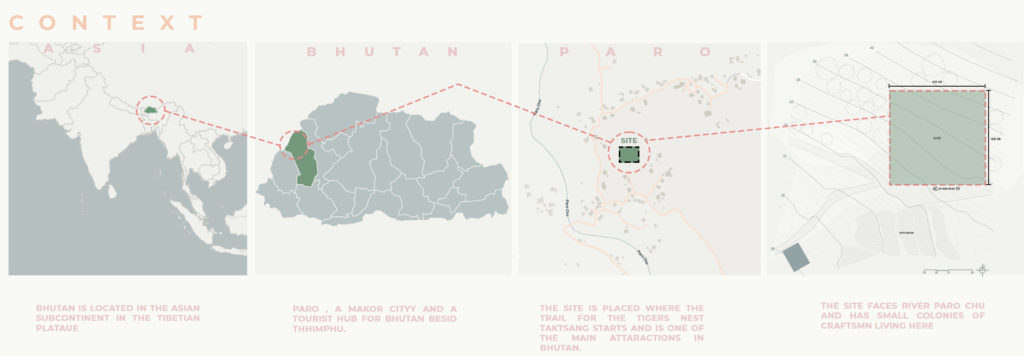
Climate Analysis
The site lies in the climate classification of a highland. High altitude brings with it extreme weather conditions, most typical here are low air temperatures, cold winds, and high precipitation. It became clear that the primary functions a shelter in such mountains can serve are providing heating and protecting from the harsh elements.
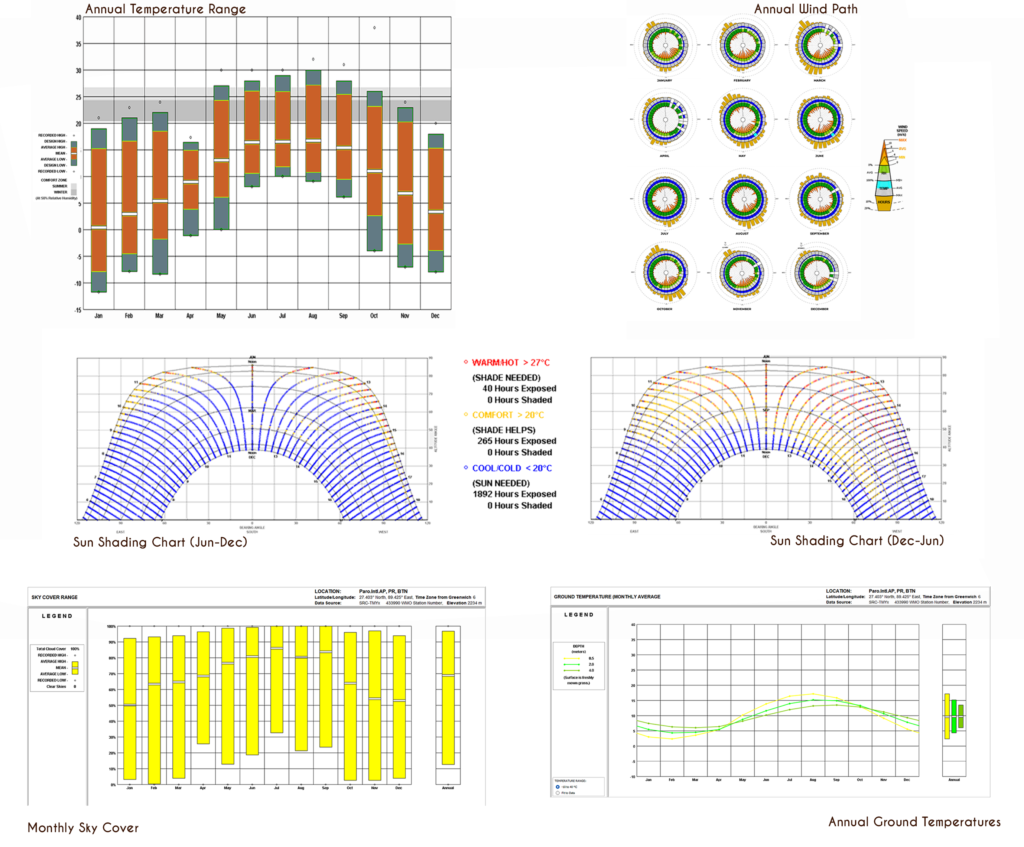

People and Culture
Although situated in a cold climate, the Bhutanese people enjoy spending time outside, and use subtle techniques to create places with sunshine and wind protection. A look into the local culture provided examples of daily life in Bhutan.
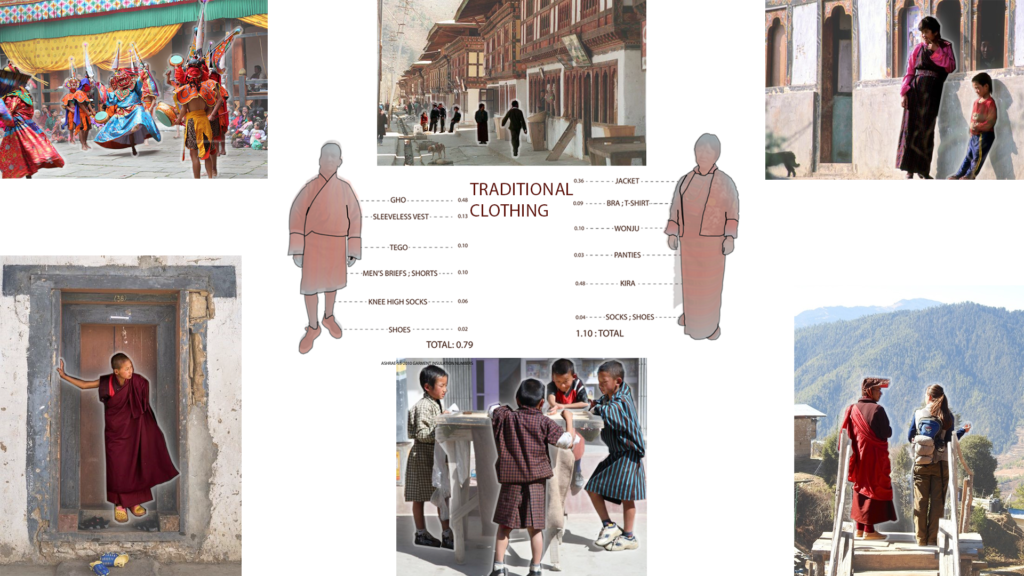
Using ASHRAE standard values, metabolic heat output was calculated specific to size of person and activity involved. We have calculated how much energy is produced in different scenarios in which high metabolic activities are performed. Dance is a common celebration performance and practiced indoors as well as outdoors. The example scenario, pictured below, shows how dance could be considered as a source of energy among other natural heating strategies.
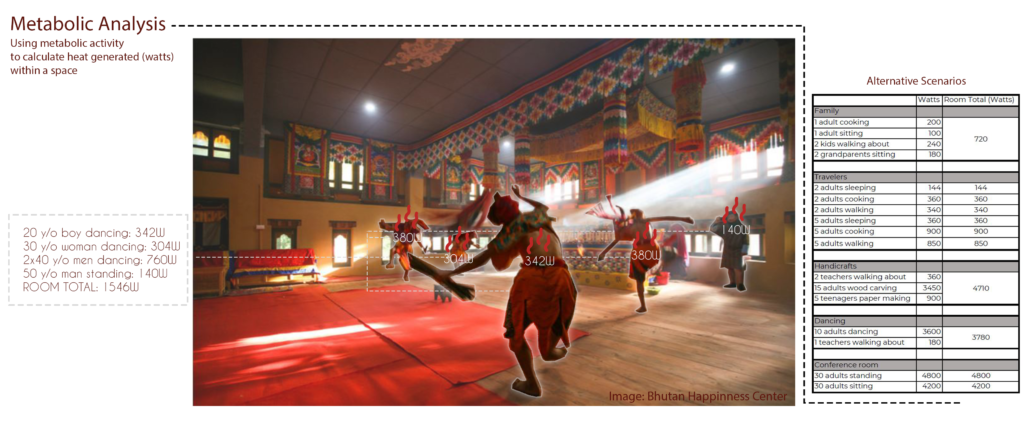
Program
As intricate details are embedded into the DNA of Bhutanese style, there is great emphasis to continue hand-made traditions. Carpet weaving, wood carving, and paper making are some handicrafts considered on our site. Our proposed buildings aims to serve the local community by providing a space of education and commerce designated to the traditional handicrafts of the area. With a balance of residential, commercial, and educational spaces, people from near and far can feel comfortable to stay and enjoy.
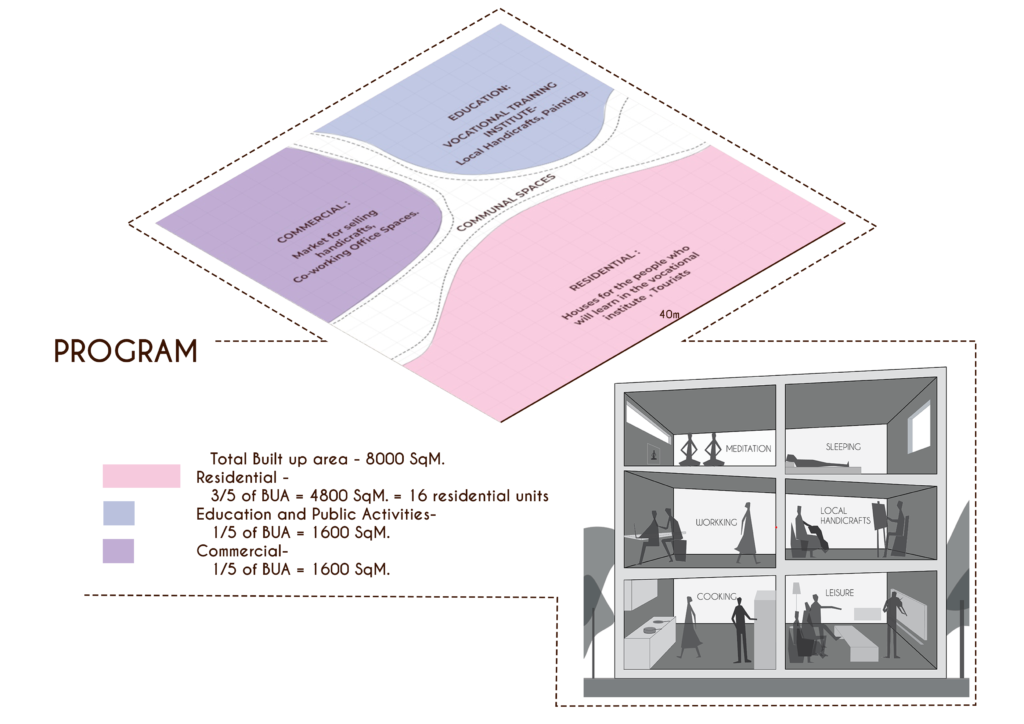
Case Studies
Case studies in the surrounding region displaying exemplary thermodynamic techniques using thermal mass, solar radiation, and efficient insulation while maintaining the heritage architecture.
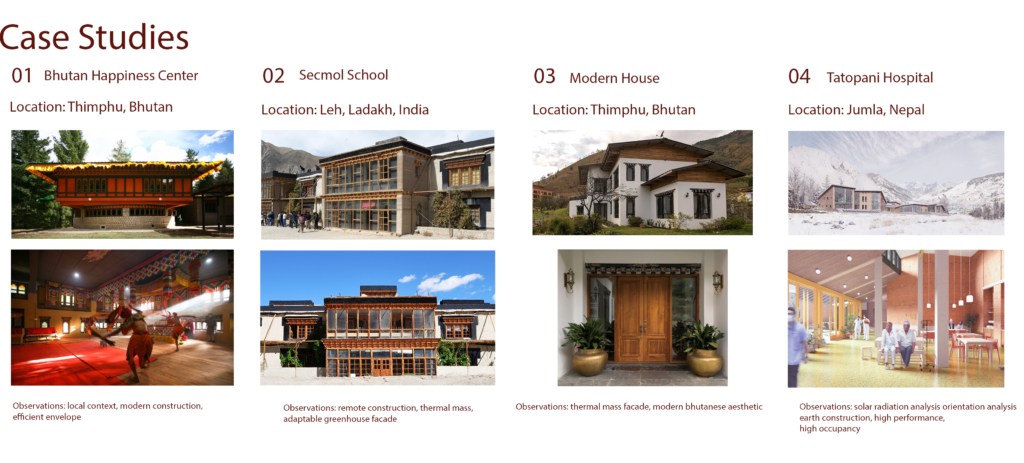
A natural material pallet emerged as an important element of the structure. The mentioned case studies provided references of successful applications in relevant contexts. Materials and their construction properties were accounted for as design concepts took shape.

Climate Strategies
Architectural climatic strategies ranked based on heat output and effectiveness within scheme.

Climatic Prototypes
Prototype development emphasizing passive solar, thermal mass and metabolic activities to create heat nodes.

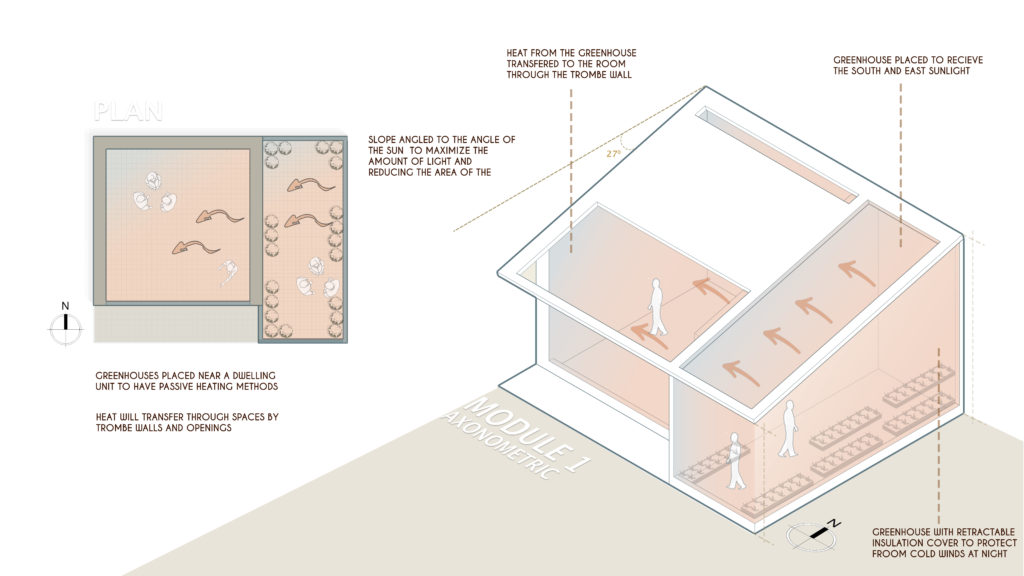
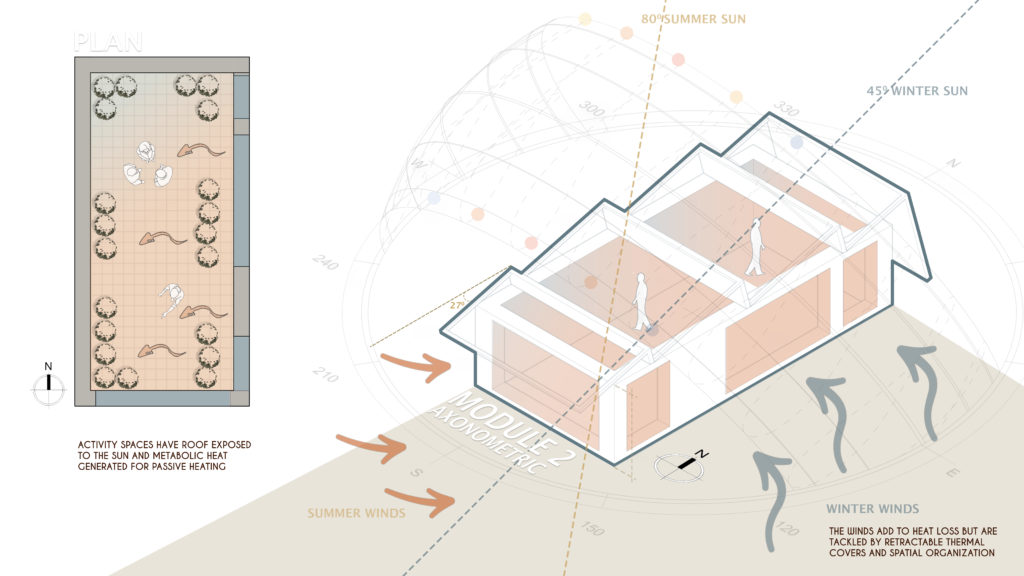

Massing Strategies
On a larger scale, massing took shape with careful consideration of orientation to produce thermodynamically effective spaces both blocking the cold winds and maximizing solar intake.
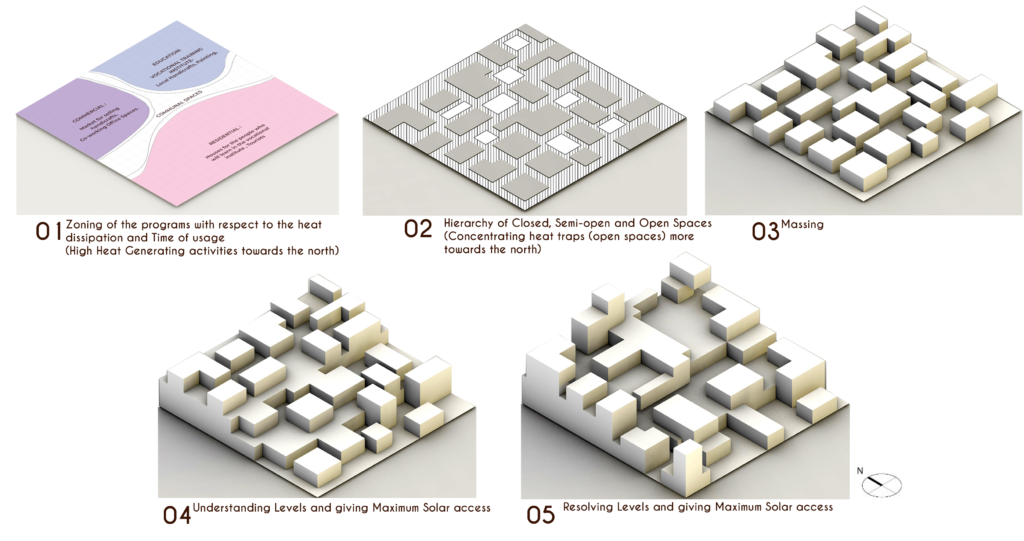
Interior strategies linked to the massing to provide heat sources to the building.
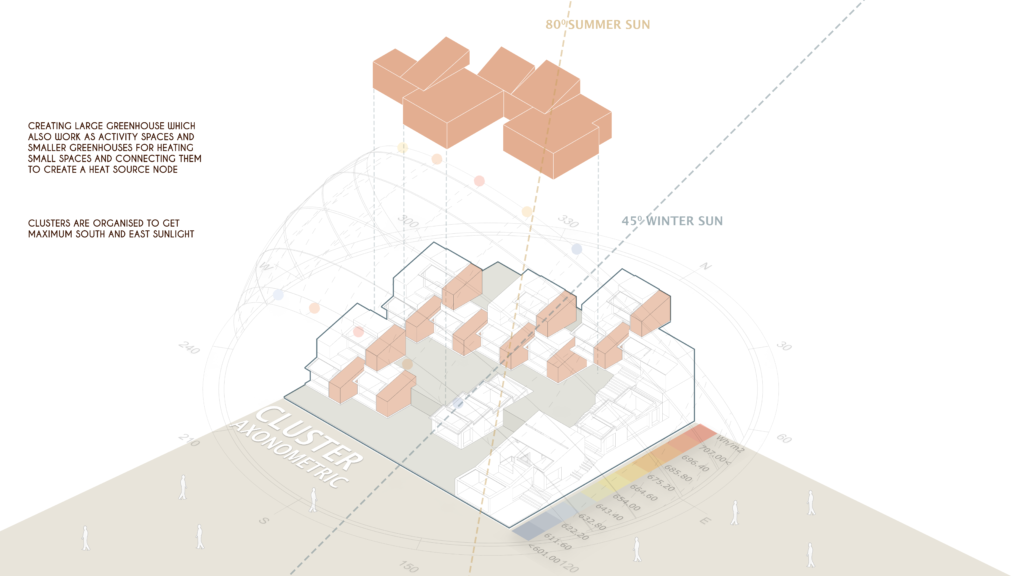
An array of heat nodes provide the structure with dedicated spaces for climate strategies. A pixelation unfolded, which later lead to establishment of core values of customization within the residential portion.
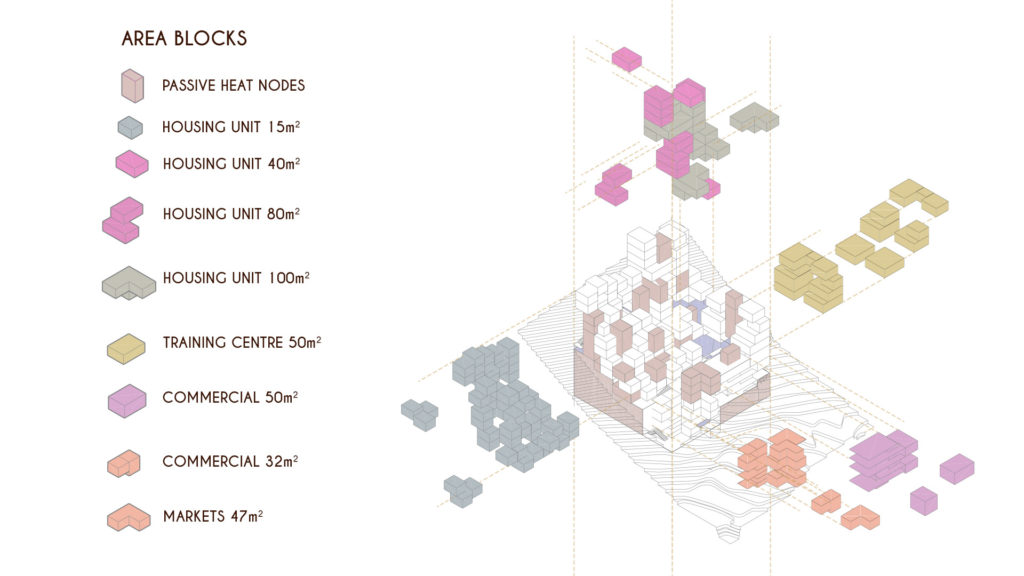
Massing strategies are driven by maximizing solar radiation for each individual massing space. By understanding relationships between the local sun-path and the staggered units, we were able to maximize solar intake to the south facade, thus providing more heat to the microclimate of the site.
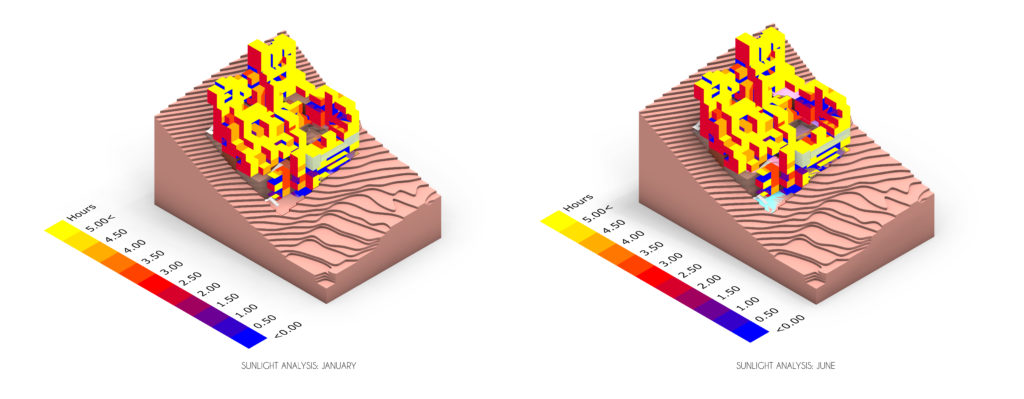
This careful stacking is developed in conjunction of sun-path modeling in Rhino, Grasshopper, and Ladybug. Final massing shows each unit receiving sunlight and thus allowing for effective passive solar heating strategies.

